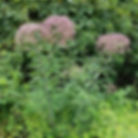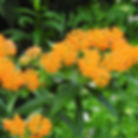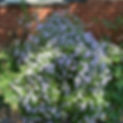17 Kentucky Native Flowers That Support Pollinators
- Zac Gnadinger
- Nov 5, 2022
- 5 min read
Updated: Jan 13, 2024

Pollinators play a critical role in maintaining a healthy ecosystem.
However, many of their populations have declined in recent years due to habitat loss and other factors.
Fortunately, Kentucky is home to a diverse array of native flowers that provide valuable resources for pollinators, such as food, shelter, and breeding grounds.
This post will introduce you to 17 Kentucky native flowers that support pollinators. We also include how many pollinators rely on them, drawn from studies done by Douglas Tallamy and Jarrod Fowler.
Let's dive in and discover the beauty and importance of these native flowers in supporting our pollinator friends.
How do Native Flowers Support Pollinators?
Native flowers play a crucial role in supporting pollinators. First, they offer a reliable food source through their nectar and pollen. Pollinators, such as bees, butterflies, moths, and others, feed on nectar for energy and pollen for protein.
Some native pollinators have even developed specialized adaptations to native flowers. For instance, pollen-specialist bees only feed on the pollen of a specific flower, and certain butterflies only lay their eggs on a particular plant.
Native flowers are crucial in maintaining our pollinators' populations and ecosystems' health. Something that non-native flowers fall short of.
Kentucky Native Flowers That Support Pollinators
Multiple Kentucky native flowers support pollinators. Some can support over 100 pollinators, while others only support a handful, but each plays a vital role in our ecosystem.
Consider adding some to your garden as you scroll through, and be sure to check their native range to see if they're suitable for your area.
1. Field Goldenrod
The goldenrod is Kentucky's state flower, and more than 30 species are native. Field Goldenrod (Solidago nemoralis) is a smaller variety that blooms from the late summer to fall. They are an excellent source of nectar and pollen for butterflies and bees.
Contrary to popular belief, goldenrods do not cause seasonal allergies. Their pollen is heavy, sticky, and transported by pollinators, not the wind.
The Solidago genus supports 112 butterfly/moth species as host plants and 42 pollen-specialist bee species.
2. Hollow Joe-Pye Weed
Hollow Joe-Pye Weed (Eutrochium fistulosum) is a tall, herbaceous perennial known for its large, mauve-pink flower heads that bloom in mid-to-late summer, attracting bees, butterflies, and other pollinators to the garden.
The Eutrochium genus supports 40 butterfly/moth species as host plants.
3. Narrowleaf Sunflower
Narrowleaf Sunflower (Helianthus angustifolius) is a tall, robust perennial native to Kentucky. It's known for its bright yellow, daisy-like flowers that bloom in the fall, bringing color to gardens and natural areas. It thrives in medium to wet soil conditions and attracts a variety of pollinators.
The Helianthus genus supports 73 butterfly/moth species as host plants and 50 pollen-specialist bee species.
4. Butterfly Milkweed
Butterfly Milkweed (Asclepias tuberosa) is known for its stunning orange flowers that attract various pollinators, particularly butterflies. In addition, the plant's nectar-rich blooms provide a valuable food source, making it an essential addition to any pollinator garden.
The Asclepias genus supports 12 butterfly/moth species as host plants, including the monarch butterfly, whose populations are rapidly declining.
5. Orange Coneflower
Orange Coneflower (Rudbeckia fulgida) offers bright yellow flowers with cone-like centers that bloom in late summer and fall, attracting various pollinators to the garden. Bees and butterflies commonly seek out the plant's nectar and pollen-rich blooms.
The Rudbeckia genus supports 20 butterfly/moth species as host plants and 29 pollen-specialist bee species.
6. Aromatic Aster
Aromatic Aster (Symphyotrichum oblongifolium) is a beautiful perennial plant with many small, daisy-like flowers with purple-blue petals and yellow centers. Its compact, bushy form and prolific blooming make it an ideal choice for adding color and texture to garden beds and borders.
The Symphyotrichum genus supports 100 butterfly/moth species as host plants and 33 pollen-specialist bee species.
7. Lance-leaved Coreopsis
Lance-leaved Coreopsis (Coreopsis lanceolata) is a charming perennial plant that produces bright yellow flowers with orange centers. Its slender, lance-shaped leaves and airy growth habit make it a beautiful addition to naturalistic gardens and meadow plantings.
The Coreopsis genus supports 7 butterfly/moth species as host plants and 22 pollen-specialist bee species.
8. Frostweed
Frostweed (Verbesina virginica) is a stunning, tall perennial plant that produces clusters of white flowers that pollinators flock to. Its attractive foliage and striking blooms make it an ideal choice for adding height and visual interest to the backgrounds of garden beds.
The Verbesina genus supports 20 butterfly/moth species as host plants and 17 pollen-specialist bee species.
9. Showy Goldenrod
Another native goldenrod of Kentucky, Showy Goldenrod (Solidago speciosa), is a lovely perennial plant with tall, arching stems topped with clusters of bright yellow flowers. Its long-lasting blooms provide a valuable late-season nectar source for bees and butterflies, making it an excellent choice for pollinator gardens.
The Solidago genus supports 112 butterfly/moth species as host plants and 42 pollen-specialist bee species.
10. Swamp Milkweed
Swamp Milkweed (Asclepias incarnata) is a perfect option for a muddy, wet area where other plants struggle to grow, such as ponds or drainage areas. It produces clusters of fragrant, pink flowers atop tall, slender stems. Its nectar-rich blooms attract various pollinators, and its foliage is the exclusive food source for monarch butterfly caterpillars.
The Asclepias genus supports 12 butterfly/moth species as host plants, including the monarch butterfly.
11. Ashy Sunflower
Ashy Sunflower (Helianthus mollis) is a shorter variety of sunflower that mixes well with the average flower garden. Sunflowers support multiple species of pollinators and are an essential plant to include in your landscape.
The Helianthus genus supports 73 butterfly/moth species as host plants and 50 pollen-specialist bee species.
12. New England Aster
New England Aster (Symphyotrichum novae-angliae) is one of the largest and most spectacular of the asters. Its golden-yellow centers and pinkish-purple rays make it the perfect plant for adding a pop of color to your fall landscape.
The Symphyotrichum genus supports 100 butterfly/moth species as host plants and 33 pollen-specialist bee species.
13. Black-eyed Susan
An iconic prairie flower, Black-eyed Susan (Rudbeckia hirta), adds a splash of color to the summer garden and makes an excellent plant for native landscaping. With a prolonged bloom time, it attracts a variety of pollinators.
The Rudbeckia genus supports 20 butterfly/moth species as host plants and 29 pollen-specialist bee species.
14. Common Boneset
Common Boneset (Eupatorium perfoliatum) is a hardy perennial plant that produces clusters of small, fluffy, white flowers atop tall, sturdy stems. Its attractive foliage and long-lasting blooms make it a great addition to wildflower gardens and naturalistic plantings, and various pollinators seek out its nectar-rich flowers.
The Eupatorium genus supports 40 butterfly/moth species as host plants.
15. Tall Coreopsis
Tall Coreopsis (Coreopsis tripteris) is a striking, tall perennial plant producing masses of bright yellow flowers atop slender stems. Its long-lasting blooms provide a valuable source of nectar for butterflies and other pollinators, and its attractive foliage adds a vertical element to garden beds and borders.
The Coreopsis genus supports 7 butterfly/moth species as host plants and 22 pollen-specialist bee species.
16. Tall Ironweed
Tall Ironweed (Vernonia gigantea) is another large plant fit for the background of a native garden. It has prolific purple-pink blooms, each cluster containing as many as 30-50 flowers, attracting various pollinators.
The Vernonia genus supports 19 butterfly/moth species as host plants and 12 pollen-specialist bee species.
17. Maryland Golden-Aster
Maryland Golden-Aster (Chrysopsis mariana) is a beautiful, low-growing perennial plant producing small, yellow flowers with button-like centers. Its attractive foliage and long-lasting blooms make it an excellent choice for rock gardens, border plantings, and other sunny yard areas.
The Chrysopsis genus supports 5 butterfly/moth species as host plants and 20 pollen-specialist bee species.
Conclusion
Kentucky is home to a diverse range of native flowers that support pollinators such as bees and butterflies.
Incorporating these plants into our gardens and landscapes can create vital habitats for these important species while also supporting local native plant nurseries.
The next time you want to add some color to your garden, consider planting one of these Kentucky native flowers and help support the vital work of our pollinator friends.


































